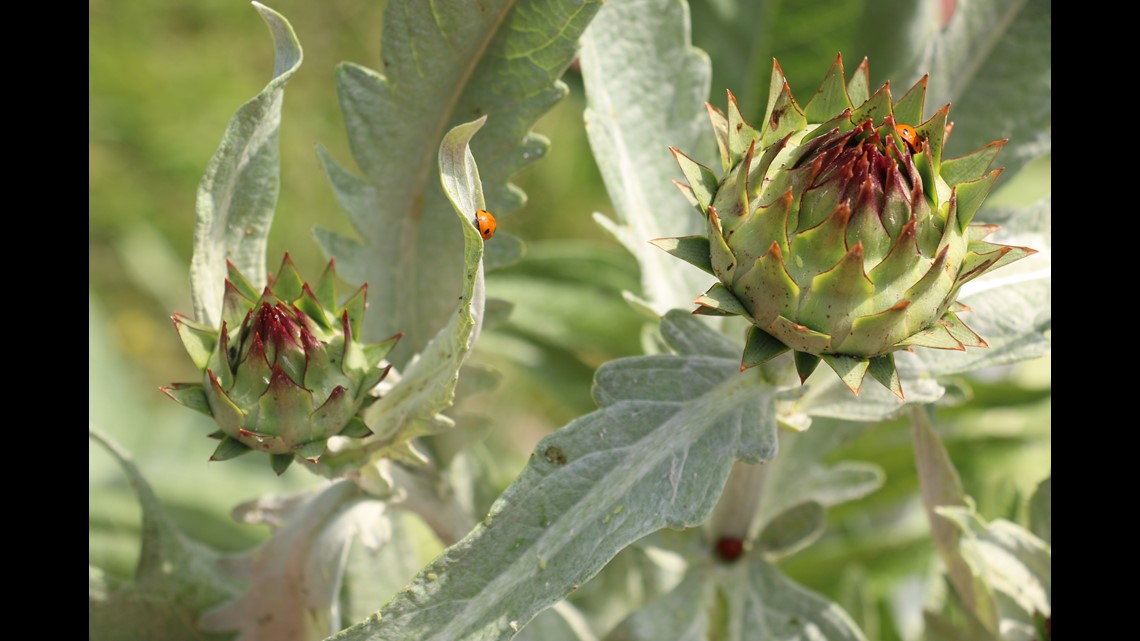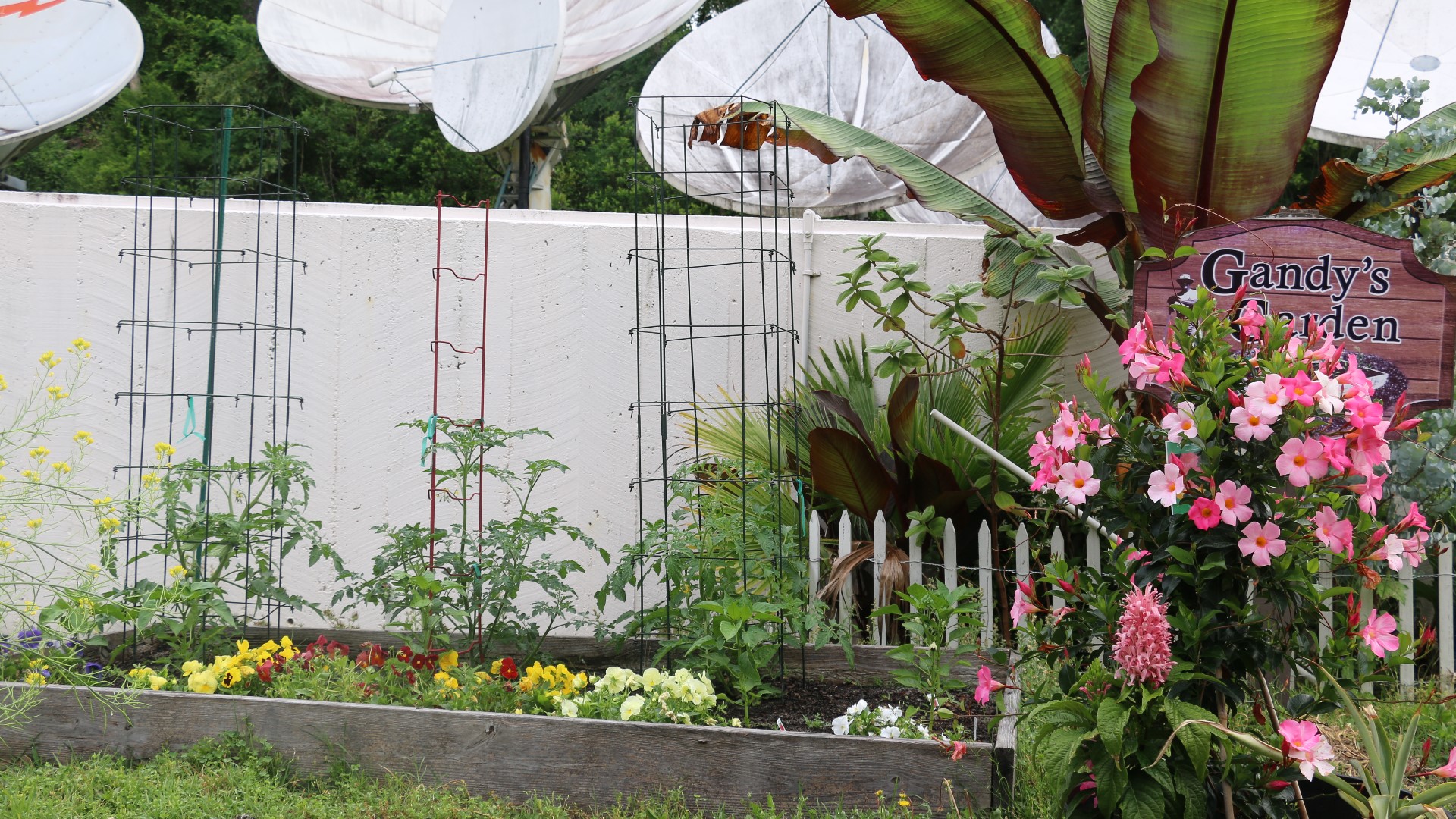COLUMBIA, S.C. — The best way to describe the weather during the first half of May 2021 in the Midlands is stormy and cool. The average afternoon high in early May is typically in the low 80s, but this year the average through May 15 was only 79F. Temperatures were running more than 3 degrees below average to start off the month. Hot weather is on the way, but the lack of extreme heat has allowed the garden here at WLTX to flourish without excessive watering. Here’s what we’re growing:
Bush & Pole Beans
These plants were started from seed in early April. They’re a great plants to start with kids because of the large size of the seeds and quick germination rates. The bush beans are growing a bit faster than the pole beans for us. The bush beans just started flowering about 6 weeks after the seeds were planted. They’re faster in hotter weather. Bush beans are shorter growing and shorter lived than pole beans which require a trellis. We will start more bush bean seeds in mid-summer when the current plants begin to wind down.
Cardoon
The cardoon plant was a seedling when it was planted in September. These plants are grown for their edible foliage, although it’s quite bitter if not cooked properly. The silvery leaves make a fantastic conversation piece in the winter garden. Cool weather is ideal for cardoons. Now that the weather is warming up, the cardoon in the garden at WLTX are beginning to flower. The buds look like their cousin, the artichoke.


Watermelon
The watermelon seedlings were planted one month ago in mid-April and only have about three sets of leaves. They prefer hot temperatures for optimal growth, but will quickly pick up in speed as the hotter summer days arrive. Watermelon can still be started from seed in May. They take about 3 months after sprouting to begin producing fruit. The fruit then takes a month to ripen. The watermelon at WLTX will likely be ready to eat starting in late July. Plants that are started in May should be ready by August.
Malabar Spinach
Malabar spinach is a tropical vine that isn’t related to the common spinach (Spinacia oleracea), but it can be eaten in a similar way. Unlike winter spinach, Malabar spinach is much larger growing and requires a trellis. There’s also no need to worry about hot weather with Malabar spinach, because the hottest days of summer are it’s preference. The Malabar spinach in our garden were planted from seedlings in mid-May.
Cucumbers
Cucumbers are another easy plant to start from seed because of the large seed size. The Cucumbers at WLTX were planted in late March and started flowering about six weeks after sprouting. These are vining plants and will climb up a trellis as the plants mature.
Tomatoes
Sweet Million was our biggest producer last season, so we’re growing these again in the 2021 garden. The tomatoes were started from seedlings in mid-April and quickly began flowering and fruiting. We’re also growing Midnight Snack, which is a cherry type of tomato, and Park Whopper Improved and Rutgers tomatoes which are larger fruiting varieties. The Rutgers tomato is a “determinate” variety which requires less support to grow and is generally a heavier producer early in the season, but will not fruit continuously like indeterminate varieties. Indeterminate tomatoes grow and fruit continuously if the right weather requirements are met.
Peppers
A few banana peppers are coming back from the fruit left on the ground from last year’s plants. Amazingly, these are now almost as tall as the seedlings purchased from the store. The bell peppers, Carolina Reaper, and Fooled You peppers were planted in mid-April as seedlings. Carolina Reaper is one of the hottest peppers there is, Fooled You has a jalapeno taste but no spice, and bell peppers are also mild.
Eggplant
The White Casper eggplant were started from seeds inside the house in late February. They’re growing well, but still not mature enough to flower – although they will be soon. It takes about 3 months after sprouting for eggplant to begin flowering and another month for fruit to be available. Eggplant fruits should be ready in June from the white eggplant. The eggplant seedlings from the nursery are falling behind the white eggplant in size, but are a shorter growing variety and are already flowering.
Winter Plants
The cool weather so far this season has been very beneficial for plants left over from the winter garden. New kale and romaine lettuce were planted in March from seedlings and are still producing healthy foliage. The parsley and cilantro planted last September are past their prime and are now setting seed. Perhaps the most vigorous of these plants are the snow peas. The seeds were started outside in October, but the plants stayed very small over the winter. The snow peas quickly picked up speed in late February and have been producing for several weeks.

